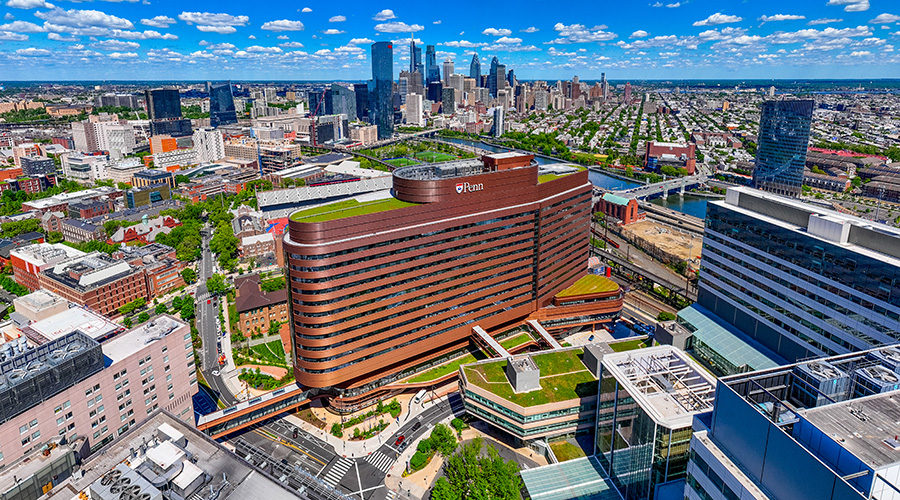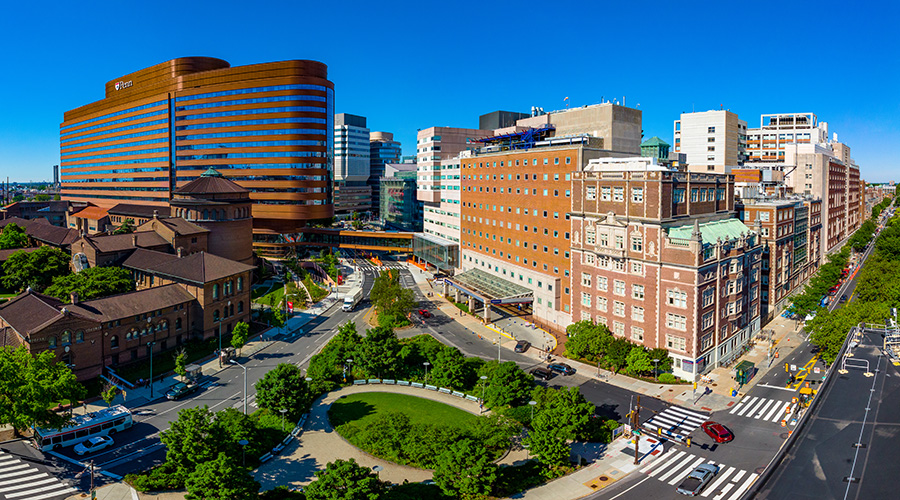Penn Medicine’s highly anticipated Pavilion blazes a new trail in patient-centered hospital care
The growth of Penn Medicine’s campus in the past decade has been nothing short of spectacular. The Ruth and Raymond Perelman Center for Advanced Medicine, the Henry A. Jordan, M’62 Medical Education Center, the Smilow Center for Translational Research, the Roberts Proton Therapy Center and the Abramson Cancer Center all represent pillars of innovation across the full continuum of medicine. But one piece remains to be realized to raise inpatient care to a new global standard. It is with great anticipation that the University-based health system will open its doors in 2021 to the hospital of the future: the Pavilion.
It’s a facility worthy of Penn’s passionate students and its leading research and clinician teams. And it will rise because of the special partnership between Penn Medicine and its philanthropic supporters.
“Medicine has evolved from big multispecialty departments to service lines with multispecialists in them,” explains Michael A. Acker, MD, Chief of the Division of Cardiovascular Surgery and Director of Penn’s Heart and Vascular Center.
Under standard hospital design, patients are admitted to a surgical floor or a medical floor, but in the patient-centered Pavilion, patients will be grouped by medical conditions, or service lines, so that all the providers with expertise related to that disease work together around the patient.
Concern for the patient’s comfort is reflected in the 500 spacious, all-private rooms in which the patient, family members and the medical team all have designated space. An extra bed in patient rooms lets family members stay 24/7, even in the intensive care unit. Comfortable indoor lobbies and family waiting areas, outdoor plazas and green spaces ease the stress of illness.
Anticipated to be a LEED-certified building, the Pavilion will link the current Hospital of the University of Pennsylvania with the Perelman Center and include a new emergency department. In a truly pioneering approach, the PennFIRST design team—comprised of physicians, architects, engineers, construction managers, financial planners, caterers, housekeeping managers, patients and others—stays involved throughout construction, ensuring that when the Pavilion opens, it remains state-of-the-art.
A stunning addition to the Philadelphia skyline, the Pavilion will enable Penn Medicine to treat more patients in a manner that yields fewer complications, decreased length of stay, improved outcomes and increased patient satisfaction. For a University that is continually setting new global standards in medicine, it’s the pièce de résistance.






